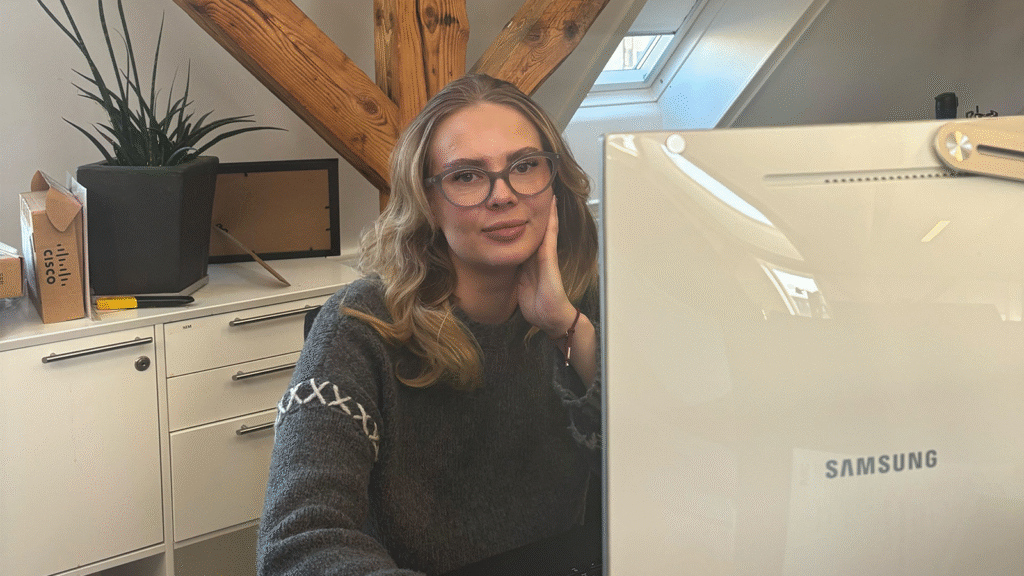Blog
Why the Internet runs slower right now
… or why is it important to keep a safe social distance, Internet included. There is no doubt that the Network and especially the Internet is under pressure these days. This is due to many factors, some of which are related to increased bandwidth usage, as working from home, taking virtual classrooms from home and a substantial growth in Streaming and Gaming services etc., all puts additional load on Data-Communication lines. But this user generated increased bandwidth is not the only factor, affecting the Internet performance.

As many people has already identified, the information delivered yesterday, wasn’t 100% correct. Whether it was the …
- Authors name: Jack Napier is the real name of the character “The Joker” in Batman Movies
- The implementation date, even though not directly provided
- The information and implications, were way too far out to be true
… that gave you the clue, is actually irrelevant, as long as it gave you a little brain-fitness during these days. … or maybe you didn’t guessed it at all? Then it is actually even more irrelevant.
No matter which category you fell into, hopefully it made you smile anyway, and that’s as important as ever.
Have a nice day
Finn Poulsen, Conscia
… or why is it important to keep a safe social distance, Internet included
By Jack Napier
There is no doubt that the Network and especially the Internet is under pressure these days. This is due to many factors, some of which are related to increased bandwidth usage, as working from home, taking virtual classrooms from home and a substantial growth in Streaming and Gaming services etc., all puts additional load on Data-Communication lines.
But this user generated increased bandwidth is not the only factor, affecting the Internet performance.
Social Distance in Real Life … and in Data Communication
Many Government Health Office recommends a minimum Social Distance of 2 meters, in order to limit the risk of infection between humans. But this recommendation also becomes relevant within the Data-Communications world, where the players are Bits and Bytes (and definitely not …humans).
This is due to the risk of an “unhealthy” Important bit might infect its neighbor Important bit. Therefore, is has become mandatory to separate Important bits with at least 2 meters!
Background and Theory
In Data communications, Bytes (or Octets) are used to represent numbers, which in turn can be thought of as digits or even characters. A byte consists of 8 Significant (another nomination for Important) bits, which are the smallest piece of information Computers can handle.
Layout:
| One Byte represented in bits | Meaning of ‘S’ |
| ‘SSSSSSSS’ | represent a Significant Bit |
A bit can have a value of either ‘0’ or ‘1’.
In a Byte the position (the order) and the value of each Bit influences the number representation within the entire Byte and thus the content.
All 8 bits are significant, if one is missing or changed, or some of the bits are reordered – the entire content of the Byte changes.
Data-Communications Math
The math described below uses a 1 Gigabit ethernet Transmission on fiber as an example, the same math can be used for other transmission speeds, for those calculations, please refer to the table at the end. The Math is calculated using the Metric System, but the net outcome is the same.
For a 1 Gigabit/s transmission the following applies:
- Every second 1.000.000.000 bits are transmitted (one Billion)
- This means that one bit will be transmitted every 0,000.000.001 second (or 1 bit every nano second) – 1/1.000.000.000 – result in seconds
- This is also known as Serialization delay – Reference 1) and 2)
- The speed of light in vacuum is ~300.000 km/s
- The speed of light in normal SingleMode Fibers can be approximated to ~200.000 km/s – Reference 3) & 4)
- Even though the analogy of a single bit travelling across a fiber, in its own discrete pulse, is not the exact way Data-transmission across a fiber works – for simplicity and illustration, the above math, can still be considered valid.
- This means that whenever the next bit hit the wire, the preceding bit has travelled 20 cm (200.000.000 * Serialization delay – result in meters)
So, to keep a safe social distance of 2 meters between Significant bits, we will need equivalent of 10 bit distance, between those significant bits.
This can theoretically be achieved by to methods:
- Increase the speed of light in fibers to a tenfold speed (for 1 Gigabit only) to 2.000.000 km/s
- Change the Pre-corona Byte layout, by injecting 9 Quarantine bits, between every Significant bit
Even though Reference 4) indicates that the speed of light in experimental fiber can be increased to approximately 300.000 km/s, there is still an unobtainable way to go before the tenfold speed is reached.
Option 1) is, by many Science researches, considered a no-go, so the only pragmatic and realistic approach would be option 2).
Post-Corona “byte” layout for Gigabit transmission speeds
Several schemes exist, none of which current ratified as a standard. One general approved de-facto standard is to use:
- 4 Quarantine bits immediately before each Significant bit and
- 5 Quarantine bits immediately following each Significant bit
This will always guarantee 9 quarantine bits between each Significant bit and comply to the general recommendation on 2 Meters Social distance.
New Layout:
| One Byte – pre-Corona | New Post-Corona “Byte” representation |
| ‘SSSSSSSS’ | ‘QQQQSQQQQQQQQQSQQQQQQQQQSQQQQQQQQQSQQQQQ QQQQSQQQQQQQQQSQQQQQQQQQSQQQQQQQQQSQQQQQ’ |
‘S’ – Significant bit – still only value ‘0’ or ‘1’.
‘Q’ – Quarantine bit – can be either ‘0’ or ‘1’, post-implementation studies will reveal which value is the most Immune and resistant to infections.
Implications on this implementation
As it can be derived from the above layout the number of bits needed to safely represent and transmit a “Pre-Corona Byte” is now 80 bits, compared to 8 bits before. This means that to the network, and thus Internet traffic, the number of bits transferred will multiply by a factor 10, and this will place even more burden on the Internet.
But this becomes a valid fair price to pay, as it will offer users a continued opportunity to safely use the Internet for Work-, Educational- and Leisure-related tasks.
New Entities – new Naming
This new 80-bit entity has already been named an Octogintet, based from the Latin word for the number 80 (octōgintā)!
Keeping a safe Social Distance at other transmission speeds
The following table gives an overview of the current situation at other transmission speeds, across fiber
| Speed | Serialization Delay | Distance btw. bits | Number of Q bits pr. S bit |
| 100 Mbit/s | 10 nano seconds | 2 meters | 0 |
| 1 Gbit/s | 1 nano-second | 0,2 meters (20 cm) | 9 |
| 10 Gbit/s | 0,1 nano second | 0,02 meters (2 cm) | 99 |
| 100 Gbit/s | 0,01 nano second | 0,002 meters (2 mm) | 999 |
As can be seen from above 100 Mbit is the only, by design, safe speed, when trying to keep the social distance of 2 meters.
Standards and implementation timeframe
As previously mentioned, there is currently no ratified standard, but on the latest Task Force Committee member meeting, which took place at Tuesday the 31th of March 2020 and ended as late as 23:30 CET, a common agreement was achieved, and most major Internet Service Providers around the Globe, indicated that they were ready to comply with the standard and that they have implemented the solution exactly at midnight CET.
However, field testing in limited scale has already been carried out, which already has led to a substantial increase on Internet Traffic. So, if you already felt the pressure on the Internet, before the actual implementation took place these field tests might be some of the reason.
Next step
This industry hopes, as many other industries, that the entire Corona situation ceases, and rely on switching back to the current implemented methods of telecommunication, and social life. In case this situation does not cease, within a foreseeable future, Researchers are already investigating whether some WDM techniques used today, where several streams of data are multiplexed in different Wavelengths across the same cable, can be controlled in a matter that would insure that the 2 meter distance still can be kept.
Other technologies, such as BiDir in its many variations (where datastreams are sent across a single strand fiber in one wavelength, and received in another wavelength across the same strand of fiber) should be depreciated completely, as the technology for controlling the bit-streams concurrently in two ends aren’t currently achievable.
References
https://www.sciencedirect.com/topics/computer-science/serialization-delay
https://wiki.geant.org/display/public/EK/SerializationDelay
https://www.quora.com/What-is-precisely-the-speed-of-light-in-fiber-optics
Om forfatteren
Relateret









